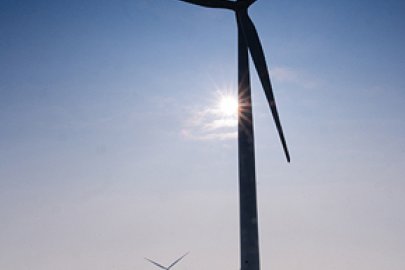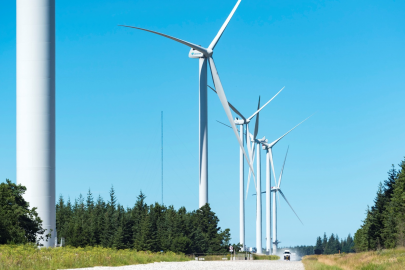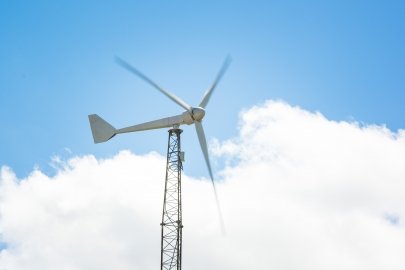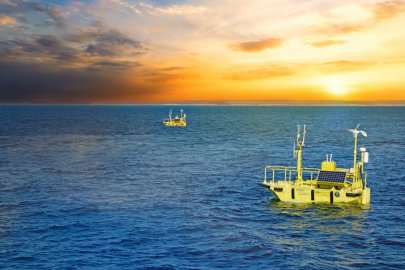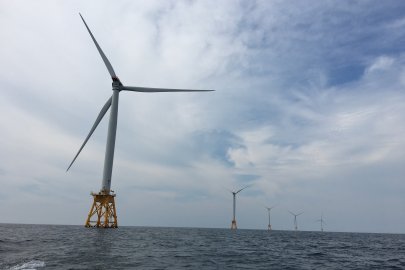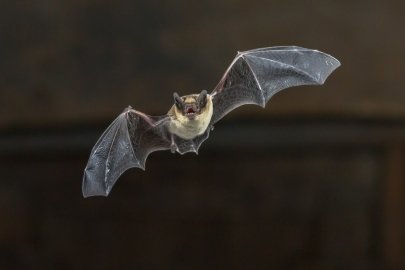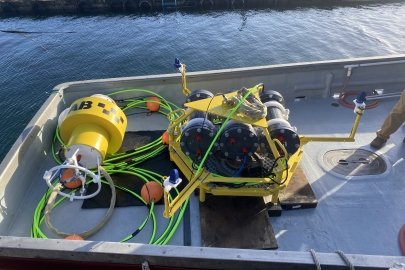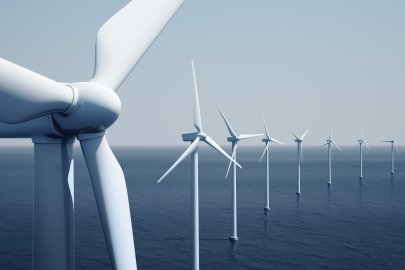Our spring newsletter is an opportunity to look both backward and forward—at wind energy research and development (R&D) accomplishments from the previous year and at the U.S. Department of Energy’s (DOE’s) plans for advancing wind energy in the future.
Wind Energy Technologies Office
June 2, 2021Our spring newsletter is an opportunity to look both backward and forward—at wind energy research and development (R&D) accomplishments from the previous year and at the U.S. Department of Energy’s (DOE’s) plans for advancing wind energy in the future. Wind is expected to play an increasingly important role in America’s energy future.
2020 Accomplishments
In January 2021, DOE’s Wind Energy Technologies Office (WETO) released its retrospective on 2020 Wind Energy Research and Development Highlights, identifying 20 notable achievements from last year in land-based wind and cross-cutting wind technology; offshore wind; distributed wind; grid integration; environmental research and siting; and wind energy workforce development. Full of pictures and stories, it showcases our most impactful R&D accomplishments in 2020.
Future R&D Plans
Looking ahead, WETO recently released its Multi-Year Program Plan for Wind Energy, Fiscal Years 2021–2025. The plan outlines wind energy opportunities and challenges; program goals and approaches; and research plans, priorities, and expected outcomes through the year 2025. The plan is packed with details, but its overarching objectives are to reduce the cost of wind energy, enable the integration of substantial amounts of wind energy into the evolving national energy system, and create siting and environmental solutions to address and mitigate environmental and community impacts.
Wind Energy Research Today
In this issue of our newsletter, we highlight wind energy projects that are recently completed or ongoing—from our national laboratories and industry partners. You’ll learn about:
- Why experts are predicting 50% lower future costs for wind than they did in 2015. Spoiler alert: a significant driver of these lower costs is wind turbine size.
- The Interconnections Seam Study that explores the benefits and costs of enhanced transmission across the U.S. electric grid, making it possible for more homes and businesses to access reliable power when needed—especially during extreme weather events like the one that hit Texas in February.
- Reuse and recycling strategies to help minimize waste and reduce the levelized cost of wind energy, including cost-effective recycling and recovery; life extension for components and systems; and innovative alternatives that make it easier to recycle or use fewer materials.
- Technical and social dynamics at play when repowering an aging wind power plant—a process that may include dismantling or refurbishing existing wind turbines and commissioning new and more productive ones.
- And more! From an inverter that will be revolutionary for small wind turbine manufacturers to wind energy impacts mitigation for bats and North Atlantic Right Whales, this newsletter is packed with promising R&D and progress.
Just getting underway, DOE’s 2021 Collegiate Wind Competition is being held as a virtual event from June 2-11. The competition challenges interdisciplinary teams of undergraduate students to work on a complex wind energy project design, providing each student real-world experience to prepare for the wind industry workforce. Based on the enthusiastic entries from all 13 college teams, it seems that the future of the industry is blowing in the right direction.
On behalf of everyone at WETO, it is our privilege to work toward advancing wind energy technologies and R&D. The industry is strong, and there is more we can do to make it even better. Thanks for joining us on this exciting and meaningful journey.
Sincerely,
Robert C. Marlay, Ph.D., P.E.
Director, Wind Energy Technologies Office
Subscribe to learn more about WETO R&D projects, news, accomplishments, and recent publications.
Subscribe to the WETO e-newsletter to stay informed on the latest wind energy news, events, publications, and updates.


